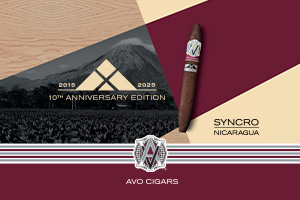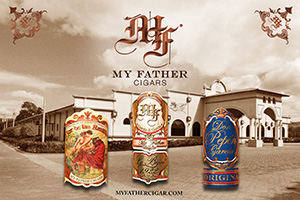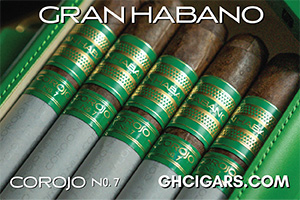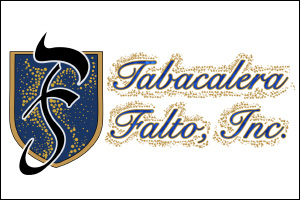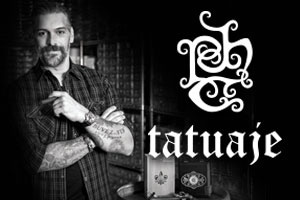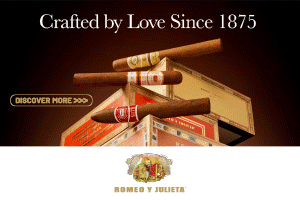Angel’s Envy Interview with Wes and Kyle Henderson
Originally featured in: Volume 13 Issue 2
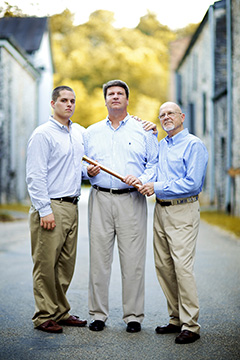
Kyle, Wes and Lincoln Henderson
Angel’s Envy Interview – Wes Henderson – Kyle Henderson
Cigar Press – Wes, you started the business with your father (Lincoln Henderson) correct?
Wes Henderson – That’s correct. Dad had been retired from the industry for a number of years and I had this crazy idea to start a bourbon brand for the family so I reached out to dad and told him what I was going to do. I asked him if he’d be interested in coming out of retirement, which he was. So that’s how we got going.
CP – And now the tradition continues.
WH – It does. I have six boys. The four oldest work here at the distillery in a different capacity and come to work everyday.
CP – How is it working with family? Does everyone have a different focus within the company?
WH – So far, we’ve done well together. We have a big family with six children. There is always give and take. It’s a ball bearing. I think that when you got that many people under one roof for as long as we have you learn the art of communication with each other and the art of compromise. That same type of behavior carries over to work so we respect each other’s opinion and boundaries. Sometimes I have to pull out the boss stuff but that’s fine. It works well, it really does. Some of the best research and development that we’ve done was around the kitchen table of our house on a Sunday afternoon. This brand is our life, it’s our family’s work and what we’ve chosen to do. Hopefully it’ll be that way for many generations to come. That’s probably why we spend so much time talking about it, like I’m sure you do. There is an art to finding a balance between work and just family time. You gotta find a way to make it work.
CP – We’re excited for the Cask Strength that’s recently been released. Can you tell us more about that?
WH – Cask Strength is a barrel proof edition of our Angel’s Envy. We do it once a year. All of Angel’s Envy’s products pair well with cigars. I think the Cask Strength will be a little more special. Because it’s barrel proofed it’s got this deep complexity that really works well, holds up, blends well whatever you want to call it, blends well with cigars. Because there are so many flavors in that barrel proof there are a lot of different ways you can go with it. We definitely see Cask Strength as being something that gets mentioned by our fans who do enjoy cigars so it’s a special release, it really is.
Kyle Henderson – Every batch that Angel’s Envy has, goes through a secondary maturation process. So the taste of our flagship products, our bourbon, that secondary maturation is in the ruby port wine barrel. That lends a lot of flavor complexity that you don’t typically get out of your standard White American Oak. For bourbon everyone gets a caramel, vanilla, sweetness, little bit of sugar and things like that. We wanted to bring in some ripe fruits, dry fruits, a little bit of viscosity from the wine barrel. Some tannic notes from the French oak and all of that marries really nicely with the bourbon. That secondary maturation is what sets Angel’s Envy apart from pretty much anyone else. We talk about our flagship products, we wanted to do the bourbon finished in the port wine barrels. That’s our everyday, our core offering of whiskey.
CP – How do you go about selecting what becomes your special releases?
KH – For our very first different release, when we were first dumping barrels, we were dumping the port barrels into tanks and selecting barrels that we blended for the product, which was the barrel proof. That was about 120-125 proof. My dad, my grandfather and I were there taking all of these pictures and videos and having fun. It was the first production of 2011. While we were dumping a couple port barrels my dad noticed that one in particular was really good. We had dumped a few barrels before and they were all really good but this particular one was really neat. It was maybe more chocolate, heavier in the fruit. My dad said, this will be our first special release. My grandfather and I were standing there, not even having bottled our first product yet, it doesn’t even exist in the market and you’re already talking about the next generation? He wasn’t wrong. A year later we launched the cask strength product. The reason we did that was that we wanted to show consumers what we’re tasting, undiluted. We’re not adding the water, we’re not bringing it down in the proof. The majority of our port barrels, that 86.6 proof works really nicely with the balance of the bourbon, with the sweetness of the port, the alcohol concentration and the way people experience their whiskey in the mouth. For some barrels, you want to give the experience right out of the barrel. That’s not to say the whiskey is any better or worse at that proof, It’s just different. Some barrels we evaluate as we’re selecting barrels for the flagship product, and they have something different. Maybe there is a really cool honey note or some oakiness that we didn’t typically expect. So we’ll set that aside. Then we continue to set barrels aside like that. It’s one in fifty or a hundred barrels so it’s not a lot of volume.
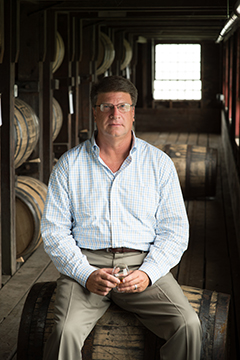
CP – What makes you choose the barrels that you do?
KH – It’s not necessarily exceptional, it’s just different or not what we expected. Once a year in July we go through and evaluate all of those barrels. Out of that section of barrels, we’ll then select barrels that work together to create a profile. We talked about how consistency is so important for the bourbon, that’s what’s cool about cask strength. There is no goal in mind. It’s just, here are the barrels we have to work with, let’s make something that tastes good. For 2019, we had a lot of barrels that had a lot of cool honey and jam notes. We had about 70-80 barrels that we had selected throughout the year and when we blended the final blend, we eliminated almost 30 of those. We had somewhere in the low 40s for number of barrels to make the final product and create the profile. There was really interesting honey, apricot jam and stone fruit type of notes. Really juicy, ripe fruits that paired really well with the honey note from the whiskey and of course the wine finish that we’re getting and the caramel and bourbon and vanilla and things like that.
WH – I think we’re really the first ones to do the secondary barrel finishes for American whiskey on a regular basis since we launched it in 2011. It’s really neat to see how far secondary barrel finishes have come and now there are a lot of people doing it. When we started doing it in 2011 it was still mostly foreign to most bourbon drinkers.
CP – Who’s idea was it to do that with barrels, Lincoln’s?
KH – Yeah that was my grandfather. While he was with his former company, Brown-Foreman, they had done a lot of work with Glenmorangie Scotch, and Glenmorangie was one of the ones who talked a lot about it with scotch. They would talk to their consumers and really commercialize the idea. Obliviously my grandfather learned a lot through them about the process. When the opportunity came up to do his own project, he immediately wanted to bring some of that influence and bring it to the US with the bourbon.
CP – So Kyle, we have heard that you are a pretty big cigar fan.
KH – I’ve been known to enjoy a cigar. I’ve got a little desk top humidor that’s got about seventy cigars in it, then I have two stand up cabinet humidors with about 2800 cigars at home.
CP – What do you tend to gravitate towards as far as flavor profiles?
KH – I’ve done a little of everything. When I first started smoking cigars it was a lot of Dominican cigars. That was about ten or twelve years ago when Dominican cigars pretty much dominated the market. I think more recently, I’ve smoked a lot more Nicaraguan. That’s also more of the trend it seems in the market now that I’ve seen. I do get a lot of Cuban cigars, but it’s a different smoke, different construction, just a different example of a cigar. I’m not tied to a brand, but I do smoke a lot of Drew Estate. Most of that is a lot of Nicaraguan tobacco. Mainly because I’ve had a really good relationship with Jonathan (Drew) for many, many years now.
CP – Have you found any favorite pairings or does it really just get switched up depending on your mood or situation?
KH – It’s almost always about mood. I’ve found that there is very few cigars that don’t go well with a glass of whiskey. Maybe there are some that go better but typically what I’ll do is go to my humidor, or to a brick and mortar store, no matter where I am, I’ll find a cigar that I’m feeling. Whether I want a lighter smoke, a shorter smoke or a longer smoke. I’m a big fan of lanceros. I’ll pick a cigar based on my mood, then drink a whiskey. Whether it’s Angel’s Envy, a bourbon, a rye, or another product from time to time. I drink a lot of rum as well. But I have yet to smoke a cigar, especially with the Angel’s Envy bourbon where I was like, this is horrible. I don’ think that exists. Some are better than others but no problems from me.
CP – What other cigars besides Drew Estate have you enjoyed?
KH – This is a weird one, I’m not sure who else has had it. I was in Las Vegas for the NFL opening weekend and somehow, I ran into Phil Maloof. He gave me one of his Maloof Brother’s blends made by Alec Bradley. I was so impressed with that cigar I actually went out and bought a bunch of singles of any Alec Bradley cigars that I could get my hands on. I am working on smoking through all of those now. I’m smoking a lot of RoMa Craft as well. My local brick and mortar here does a lot with Skip. I’ve got a lot of stuff from RoMa. They are making some unique and quirky cigars. A lot of their core lines are pretty consistent and a great every day smoke.
CP – So you must be know as the cigar guy around there.
KH – Everyone at the company knows I’m a cigar guy so a couple times a month, someone will go on vacation or they’ll be at an event and a bundle of cigars from wherever shows up on my desk. A lot of times I’m smoking whatever was given to me.
CP – You mentioned before blending 70-80 barrels for the Angles Envy, is that typical?
KH – Typically we will blend between sixty to ninety barrels together to create a tank batch. That batch will take us two or three days to bottle. Now that’s after aging, after aging losses after we put it into the port barrels, after we’ve had port barrel losses and done all the blending from there. On the new distillery side we do about 110 barrels a day, on average. We run 24/7 now, obviously that’s to support the increase growth in the coming years. Right now as far as the bottling goes, to go market we are dumping a hundred barrels a week of aged and finished product to be bottled. So we’re almost ten times as much new production as we are finished production right now.
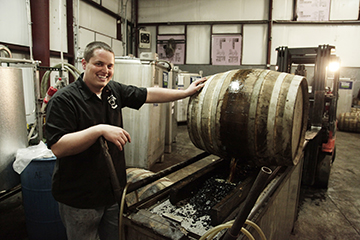
CP – What is the most difficult part of production for you?
KH – Consistency. We have a lot of wonderful fans and consumers who expect something when they open a bottle of Angel’s Envy. Until our current production facility came on line, the whiskey that we distilled here, still hasn’t come down the line as far as a bottling stand point. We were sourcing and working with contractors to produce it for us, but we just didn’t have the control that we ideally wanted over every single aspect of the production. Managing that, years down the road, after it’s aged, after it’s finished and making sure we can generate a consistent product day in and day with whiskey from three or four different distilleries, aged in different warehouses, aged on different floors and things like that. Keeping the final product like you’d expect, is usually the hardest job we have here.
CP – Cigars are the same way, especially with how tobacco grows.
KH – We’re an agricultural product and we are affected tremendously by the crop but we have all of those years in barrels, with tobacco it’s even more difficult.
Cigar Press – We really love the Rye and unfortunately, that’s hard to get around here.
WH– We’re starting to do that twice a year. The problem is the more we make it the more it grows. Even making more it will still sell out. But we’re trying to keep up.
CP – How did you decide on the rum barrels that you used for Rye?
WH – There were probably over 100 different types of rum that I looked at before we chose the one that we were interested in. Finding the rum that we liked best for the Rye wasn’t the entire battle. If we found the rum we liked we had to find the producer that would let us choose the barrels ourselves. It just so happened that my favorite out of all of them was from Plantation. I got to know the owner of Plantation Rum and they were kind enough to sell us their barrels. That partnership has been going on since the Rye was released. That was really the process. I wanted a really dark deep, rich rum so the sweetness of the rum would balance with the spiciness of the Rye.
CP – There are a lot of correlations between cigars and whiskey. Taking that moment to sit back to enjoy and relax for one, to enjoy life.
WH – Distilled spirits have been used for years to enhance our social experience. Spirits like bourbon has so much history. The bourbon itself is something to talk about. Pair that with cigars. I was at an event last weekend, a charity event in Nashville, but it was bourbon and cigars all weekend long, men and women. It was a great vibe. When you’re sharing a smoke or sharing a bourbon or whatever, it’s non-denominational, it doesn’t have a party affiliation, it’s just people sitting down together and enjoying some time visiting.
CP – So you and your father have both been inducted in the Kentucky Bourbon Hall of Fame.
WH – They have an Inaugural Bourbon Hall of Fame class and when I got the call that I was selected by the industry it was a huge honor. It was very emotional for me, to be in that group of people. People that I look up to everyday and are truly icons of bourbon and guardians of the history of bourbon. It’s an amazing thing. I don’t think I quite understand it. But really, we just do our thing. We wanted to make good whiskey and knew that we could make good whiskey. I don’t think you set out to win awards. I don’t think you set out to get all the accolades that we’ve got. We are just grateful to have them. I don’t really pay attention to a lot of that stuff. Accolades are great and it’s nice to have that validation, but I don’t know if I need validation but it certainly makes you feel good. When I go out to events and I see the organic growth and the people who love the brands, that is what I enjoy the most. I enjoy making that connection with people. I’m out a lot, so I make a lot of connections, which is really cool as well.
CP – You also do the Sherry Cask, can you tell us more about that?
WH – The Sherry Cask was the first release in what we call our Cellar Collection, which are limited releases that we’ll do from time to time. It’s blended at the distillery in Kentucky. It sold out quickly, we didn’t have a lot of bottles. It was a big deal, I was blown away. One of the top spirits writing organizations in the world, named it the number one whiskey in the world this summer which is pretty cool. That’s one of those things, even though I don’t pay attention to a lot of it, that was a big deal.
CP – How do you approach growth being that whiskey takes years to make?
WH – Well it takes 4-6 years for a barrel of bourbon to be ready to use, or put it in the bottle. We project out. We’re currently filling 140 barrels a day. We do three shifts here at the distillery. I think our production now will be about 130,000 cases. Even though it sounds like a lot, it’s really not when you look at the grand scheme with the larger brands. I’d say we’re one of the larger if not the largest craft brands out there. The big guys put out a lot more bourbon that we do.
CP – Kyle, do you have a favorite part of the process?
KH – Personally I really like fermentation. It’s not a fast process, it’s five or six days but in the grand scheme of what we’re doing it’s a very fast process. We’re aging five or six years. But the change you get from the raw cereal, the grain and adding water and yeast, to doing the mash and cooking those grains down, the change and development organically, chemically from a visual standpoint and all the other changes in the course of a few days is really neat to see. From a consumer prospective, we run a distillery in the middle of downtown Louisville (KY) which was an insanely crazy idea. We get a hundred thousand people walking in our doors trying to learn about and experience our brand. From a consumer standpoint, we can show you a fermenter where the fermentation hasn’t really started yet, a fermentation that’s a little bit in the middle so you get that carbon dioxide activation, some of the sweetness is going away, the acidity is coming up, you can see all the process’ and things side by side. 60-70% of the flavor comes from the aging. But a lot of the flavor and character of your whiskey is coming from the fermentation process. I really enjoy it.
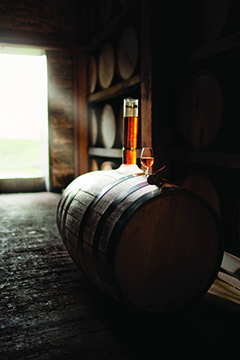
CP – And you Wes, what is one of your favorite aspects of what you do?
WH – That’s a tough question too, like I love all my kids. I don’t rank my kids or whatever, but one may be my favorite today and a different one tomorrow. I like experimenting with new barrels. Barrels we may find out there on a whim or some connection we make with a producer and the excitement of getting those barrels in the door. Those new projects are great. I really enjoy everything I do. My job really isn’t that hard. I get to drink bourbon with really cool people, I get to go eat at really nice restaurants, I get to go to work and be creative, it doesn’t suck. But we bust our ass. You make a lot of sacrifices to build something and that’s cool, it makes it even more rewarding.






